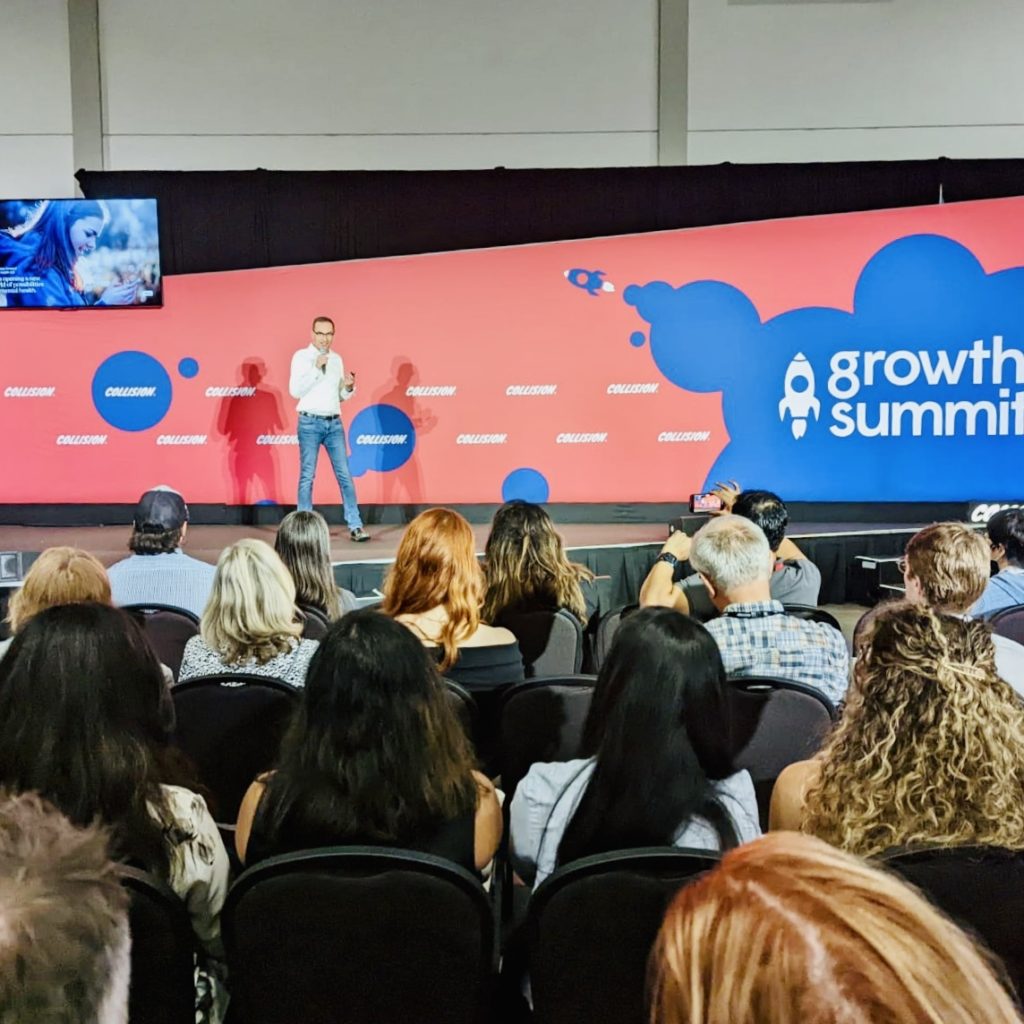Science and technology have been much like heroes in recent years. From therapeutic breakthroughs to live-streaming advances, we’ve been able to navigate the challenges of the global pandemic by fighting viruses and remaining socially connected. These have been our headlines for many months—but what’s next? Is this only the beginning of a better world shaped by the collective intelligence we’ve built, ready to meet the circumstances we face?
Our CEO and Co-founder, Alex Frenkel, offered perspective at a conference attracting 35,000 technology leaders in Toronto this past week, and he focused on another public health crisis that is affecting hundreds of millions: declining mental health among teens everywhere. Audience members at Collision 2022 heard Alex’s message of hope for a better future by leveraging AI and an empathetic understanding of the problem. The reason Kai has come into our picture, and why it is leading a charge in a necessary new wave of innovation: Mental Health 3.0.
How did we get here?
So, what wasn’t working with Mental Health 2.0? Like the need for most innovation, the solutions got outgrown, and new obstacles surfaced. In the case of teenagers today, awareness about the importance of well-being is not enough, and the role of social media has led to a new set of toxic behaviors proven difficult to address. During the pandemic, social media and screens were often the only windows our youth had to the outside world, creating a false reality and exacerbating feelings of loneliness, exclusion, and eroding many young people’s sense of self-worth.
According to Alex, the more time they spent on social platforms, the worse the situation got: “The result? Today, 40% of teenagers say that they feel persistently sad or hopeless. That’s right, nearly half of all teens, everywhere.”
Unfortunately, this problem can’t be solved by matching up each suffering teen with formal medical care, as Alex explained. “Outside of cities, the average number of therapists for 100,000 people is only 17. And even if a teenager can get an appointment, few would have the ability to pay $200 a week for ongoing care without speaking to their families, something many of them don’t feel comfortable doing.
“These aren’t just statistics. I’ve experienced this firsthand during my time working as a therapist both in private practice and at high schools. Often, I would only see students once every three months, and often there wasn’t enough time to see all of those in need. It was truly heartbreaking,” he added.
A quick fix for many was to move therapy online, which made sense from the point of view that it instantly becomes more accessible. But the challenge around sustainability remains: that there aren’t enough therapists to go around.
Turning to AI
This is where technology can help make care more accessible, and affordable—and with the right empathetic understanding, more approachable. According to Alex, these are core ingredients of Mental Health 3.0, and they all factor into the Artificial Intelligence built by Kai to serve teens in daily life.
“Mental health 3.0 is made up of two interdependent parts: a shift in how we understand mental health and well-being and the technologies needed to make that a reality. It is a move away from the idea that we should only seek help when we feel broken, to one where we focus on well-being every day in ways that become habitual,” said Alex.
In short, Mental health 3.0 is a shift from reactive care to sustainable preventative practices. And by inserting AI into the process, we don’t just move therapy online – we democratize mental health and reach everyone who needs help in a truly accessible way.
It’s a case of providing a space (or platform) that lets the youth better process or walk away from all the negative images, social pressure, and unhealthy comparisons and judgment they get from engaging on social platforms and giving them what they need. This is meaningful engagement, where they aren’t judged and can be themselves. And as Alex says, this is exactly what Kai is developing.
Alex added: “For the first time, it is now possible to build always-on personal companions that are available anytime, anywhere. These personal companions can provide tailored exercises using best practices from CBT, ACT, and other treatment modalities designed in friendly and accessible ways. And they can meet teenagers where they are by allowing them to access care directly from their favorite chat apps, rather than asking them to download a new app that they may not trust or feel comfortable with.”
Does it work?
Yes, yes, yes. Alex told the audience that early results undertaken by Kai have shown that teenagers who have engaged with AI-based mental-health platforms have shown a 20% improvement in well-being in only four weeks.
“That is a staggering number. That is a number that is the difference between suffering alone and seeing a light of hope on the horizon. And that is a fundamental difference in anyone’s life, particularly a teenager,” he shared.
This is the tip of the iceberg. But the results are encouraging, proving that there is a place where humanity, technology, and science meet. A place where human ingenuity once again provides the hope we need to tackle any crisis.
And that is visiting Kai.ai.






